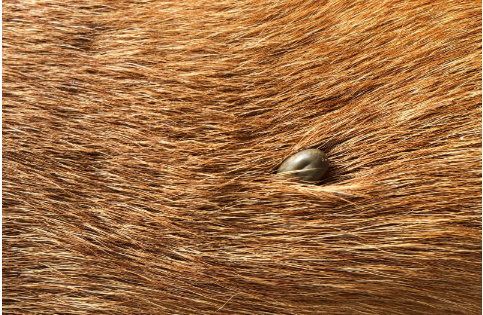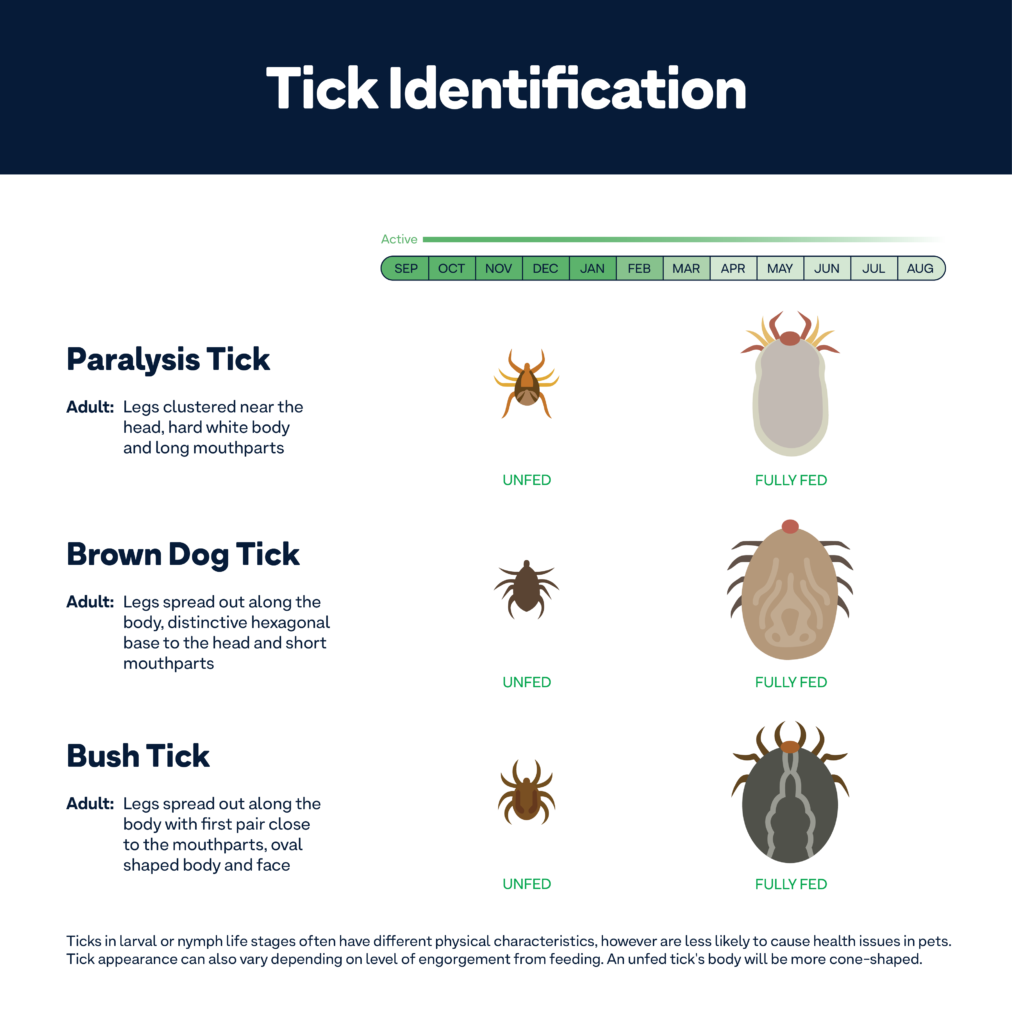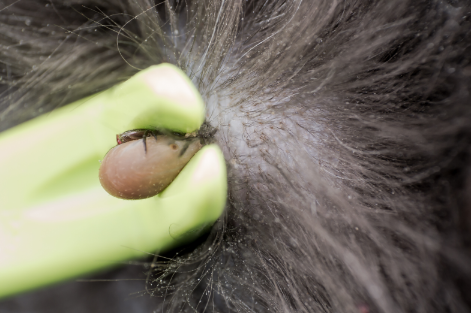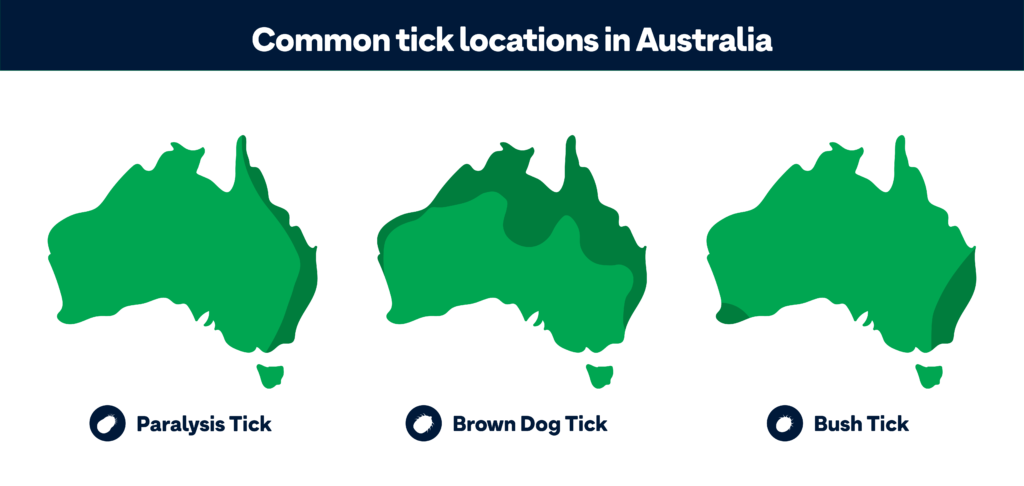Ticks On Dogs Guide: Tick Identification & Bite Symptoms
Ticks are a reasonable concern for pet parents around Australia, particularly in the warmer months. With potentially fatal outcomes after a bite, it’s important to know what ticks are, how to identify them, and what you can do to prevent them.
What Are Ticks?
Ticks are a type of arachnid that feed on the blood of mammal hosts. Different types of ticks prefer different hosts. In Australia, we have many different species of ticks, although most are hard bodied ticks. The three types of ticks of most concern to dog owners are the paralysis tick, the bush tick, and the brown dog tick.
What Does A Tick Look Like On A Dog?
A tick’s body can look like a brown or grey-ish coloured bump on the dog’s skin. The area around the tick may be red and/or swollen and the size of the tick’s body varies depending on how engorged (full of blood) it is.
You may be able to see the tick’s legs along the sides of its body. It is unlikely that you will be able to see the tick’s mouth as that is inserted under the skin.
What Type Of Ticks Bite Dogs?
Paralysis Ticks
Paralysis ticks are the ticks we’re most worried about in Australia as their bite can be fatal .
Paralysis ticks’ salivary glands produce neurotoxins – a toxin that affects the nervous system – which can lead to paralysis and death if not treated quickly.
Paralysis ticks have pale bodies and long mouth parts with all their legs grouped near their head.
They are typically found in warm, humid regions along the east coast of Australia. Their preferred hosts are native animals, particularly bandicoots.
Learn more about paralysis ticks
Bush Ticks
Bush ticks are not as dangerous as paralysis ticks, but can still cause skin irritation and transmit diseases. If the infestation is severe enough, they can cause anaemia. Bush ticks prefer to live on cattle, but sometimes use dogs and other animals as hosts.
A bush tick’s body colour ranges from reddish brown to blue-black depending on its level of engorgement. Their legs are spread along the sides of their body.
Bush ticks are found mostly along the Australian east coast, from Queensland all the way down to Victoria.
Brown Dog Ticks
Brown dog ticks don’t produce any disease themselves but can transmit diseases and cause skin irritation. They prefer to live on dogs and are rarely found on other animals.
Brown dog ticks are brown in colour and have short mouthparts. Their brown legs are spread along their bodies.
These ticks have adapted to temperate climates and have lower moisture requirements compared to other ticks. They’re common in central and northern Australia, but have been reported in southern cities like Adelaide and Melbourne.
Learn more about brown dog ticks
What Are The Symptoms Of A Tick Bite?
Symptoms of a tick bite can vary depending on the type of tick and size of the infestation. Symptoms that suggest a tick bite include:
- A tick crater – a wound where the tick’s head was attached.
- Swollen, red skin around the area of the bite.
- Itchiness at the site of the bite
- Pale gums due to anaemia if there is a heavy tick infestation.
Because paralysis ticks produce neurotoxins, you might notice the following symptoms before you see the bite:
- A change in their bark (usually it becomes more hoarse and harsh)
- Weakness, particularly in their hind legs
- Vomiting and regurgitation
- Dilated pupils
- Difficulty swallowing
- Difficulty breathing
If you’re concerned your dog has been bitten by a tick, call your vet immediately. Find your closest Greencross Vets clinic here or your closest after-hours emergency vet here.
How To Check Your Dog For Ticks
You should be performing a tick check on your dog daily.
Gently run your fingers all over your dog. You’re looking for a bump that is the tick itself or a wound or area of swelling that may be a crater where a tick was previously attached.
Ticks usually prefer to attach to the head, neck, or between the toes but can be found anywhere on your dog. Don’t forget to check in their ears, under their front legs, in their groin area, and even inside their mouth!
How To Remove Ticks From Dogs
To remove a tick, use either tick removers or your thumb and forefinger to grip it as close to the dog’s skin as possible. Once you have a good grip, firmly pull the tick off the dog’s skin.
If you are concerned about your pet and consult your veterinarian contact your local Greencross Vets or after-hours emergency vet.
How To Prevent Ticks On Dogs
The best way to prevent ticks on dogs is to regularly give your dog a tick preventative, whether that be a chew, spot on, or tick collar.
Popular tick preventatives for dogs include:
- Chews such as Bravecto, Credelio Plus, Nexgard, Nexgard Spectra, Simparica, and Simparica Trio.
- Spot on treatments such as Advantix, Frontline, and Bravecto.
- Tick collars like Seresto.
Make sure to read the instructions for whichever preventive you use, as they all have different guidelines for use.
Book an appointment with your local Greencross Vets to discuss which tick preventatives best suit your dog.
In addition to using preventatives, you could do the following to help prevent ticks attaching to your dogs:
- Avoid areas of dense vegetation that may be habitats for native fauna.
- Keep grass cut low in your yard.
- Clean your pet’s bedding, preferably with hot water, and seal any cracks or crevices in your dog’s kennel.
Ticks On Dogs FAQs
Where Do Ticks Live?
Different tick species live in different areas of Australia.
Paralysis ticks prefer warm, humid areas with dense vegetation habitats occupied by their native fauna hosts. They’re usually found along the eastern coast of Queensland and New South Wales, but are being reported further afield.
Bush ticks like similar weather to the paralysis tick and infest areas where they will have access to cattle hosts. They are mostly found on coastal New South Wales, eastern Victoria, and in Queensland.
Brown dog ticks are different in that they can live in a more temperate environment and don’t need the humidity to thrive. They’re common in kennel situations and like to lay eggs and moult in cracks and crevices. Brown dog ticks are common in central and northern Australia, but have been found in southern cities.
When Is Tick Season In Australia?
Tick “season” refers to when ticks, particularly paralysis ticks, are more active. This is generally regarded as being from September to March.
However, it’s still possible for dogs to be bitten by ticks in the colder months, especially in states with milder climates. It’s important to monitor your dog for signs of ticks year round.
Can Ticks Bite Humans?
Yes, ticks can bite humans, however you’re more likely to be bitten by a tick you pick up in bushland than one you pull off your pet.
Bush Tick vs Paralysis Tick: What’s The Difference?
Paralysis ticks produce neurotoxins in their saliva which can lead to death if not treated quickly. Bush ticks don’t produce any toxins, although they can transmit diseases, and may cause local skin irritation.
Bush ticks and paralysis ticks have different preferred hosts. Paralysis ticks’ preferred hosts are native fauna like bandicoots. Bush ticks’ preferred hosts are cattle.
Bush ticks and paralysis ticks look different. Paralysis ticks have a light coloured body, long mouthparts, pale middle legs and brown outer legs grouped near its mouth. Bush ticks are darker coloured (ranging from reddish brown to blue-black) with short mouthparts and legs spread along the side of their body.
Brown Dog Tick vs Paralysis Tick: What’s The Difference?
Unlike paralysis ticks, brown dog ticks don’t produce toxins in their saliva. Brown dog ticks can carry diseases and cause skin irritation.
Brown dog ticks prefer to feed on dogs and are rarely found on other animals, whereas paralysis ticks prefer to attach to native fauna.
Brown dog ticks prefer kennel-like environments with cracks and crevices and can tolerate temperate environments. Paralysis ticks live in warm, humid areas with plenty of vegetation.
Brown dog ticks look different to paralysis ticks. Paralysis ticks have a light coloured body, long mouthparts, pale middle legs and brown outer legs grouped near its mouth. Brown dog ticks are brown with short mouth pieces and four brown legs spread along each side of their bodies.
When Should I Worry About A Tick Bite?
A tick bite should always be of concern, especially if you don’t know what type of tick bit your dog or you suspect a paralysis tick.
If you suspect a paralysis tick or aren’t sure, reach out to your vet immediately. Contact your vet for advice even if you think your dog looks okay as paralysis tick cases can be unpredictable and rapidly go downhill. The sooner you reach a diagnosis and start treatment, the better the chances of a good outcome.
Find your local Greencross Vets here or find an after hours emergency vet near you.
What Kills Ticks?
Acaricides kill ticks. They’re some of the active ingredients included in tick preventatives to kill ticks when they first attach to your dog. Acaricides are also present in flea and tick rinses and some topical sprays.
How Big Can A Tick Get?
Tick size varies depending on the life stage and level of engorgement. Larval stages can be as small as a grain of rice while fully engorged adult females can be almost as large as your fingernail.
What Do Tick Eggs Look Like On Dogs?
You won’t see tick eggs on dogs because ticks don’t lay eggs on their hosts. Adult female ticks leave their host and lay eggs in the environment.
How To Get Rid Of Ticks In Your Yard
To remove ticks from your yard, keep grass low and remove excess vegetation that may be habitats used by the ticks’ preferred hosts.
You may consider using environmental acaricides to kill ticks that are present, however keep in mind some of them may be toxic to pets.
What Do Ticks Eat?
Ticks feed on blood from their hosts.
What About Ticks On Cats?
Read our Ticks On Cats Guide here.
If you have any concerns about ticks and your dog, speak to your local vet immediately. Find your nearest Greencross Vets clinic here.

 Greencross Vets
Greencross Vets 















